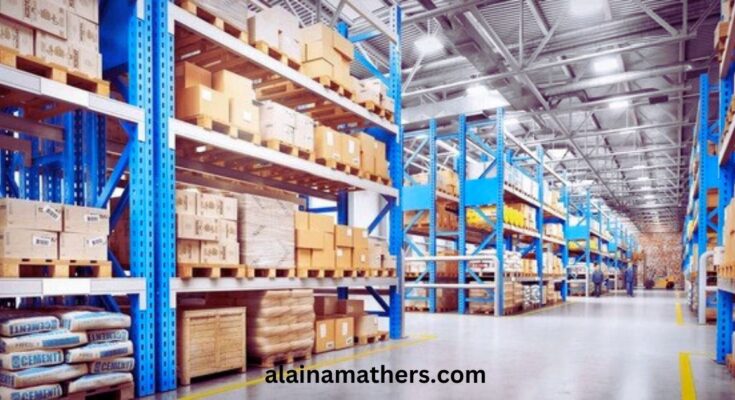Robots that automatically choose, pack, and dispatch products can greatly increase warehouse throughput. These systems are easy to integrate into warehouse management software and provide seamless coordination between operations.
With increasing environmental concerns, the logistics industry increasingly emphasizes green practices. This includes focusing on energy-efficient technologies and electric forklifts to reduce carbon footprints.
Automated Picking and Packing
As warehouses like commercial warehousing prioritize e-commerce order fulfillment, they invest in automated picking and packing technologies to expedite the process. These solutions help improve productivity, reduce errors, and lower overall warehouse costs.
Voice-directed picking or tasking combines speech recognition software with mobile headsets to give workers audio instructions for each item to pick. This hands-free method minimizes the need for handheld devices, making the workflow safer and more efficient.
Zone picking is a high-volume warehouse order fulfillment method in which different items are picked within a single zone. This increases productivity by reducing travel distance and cutting down on labor hours.
Mobile automated warehouse picking systems are known for their efficiency, reducing pick times and boosting accuracy. They also optimize storage space, providing more inventory in the same footprint.
Digital Twins
Digital twins are virtual models representing a physical product according to its components. Connected sensors on the physical product gather and process data, allowing the twin to monitor performance and anticipate issues that might impact output.
This technology provides a risk-free arena to experiment with what-if scenarios and refine strategies in warehouse operations. A virtual model of a warehouse allows managers to simulate the impact of changes in workflow design, inventory management, and logistics processes without disrupting actual operations or losing productivity.
For example, a slotting solution can improve warehouse productivity by placing high-velocity items closer to shipping docks while ensuring that lighter or fragile items are picked last. This enables an efficient and cost-effective operation while maintaining customer service expectations.
Drones
In response to labor shortages and supply chain disruptions, warehouses deploy advanced automation solutions. Drones are becoming an essential component of these tactics, increasing efficiency and productivity.
Warehouse staff operate in fast-paced workplaces under tight deadlines, attempting to do repetitive duties as effectively as possible. To improve efficiency and safety, intelligent warehouses are integrating wearable devices that provide hands-free mobility and detailed information about the goods around them.
Immersive solutions like virtual and augmented reality help streamline the implementation of new procedures, warehouse expansion planning, predictive modeling, and delivery process design. They also enhance warehouse employee training and safety. These solutions are often cloud-enabled, simplifying system maintenance and granular performance metrics analysis. This makes it easier to identify areas for improvement and reduce costs.
Robot-as-a-Service
In an increasingly competitive landscape, warehousing must focus on optimizing multiple areas of operations. This includes addressing labor shortages, rising wages, and escalating turnover rates. It also means reducing human-induced errors that can damage a company’s reputation in a consumer landscape where reliability is critical.
Warehouse automation is one of the most critical trends to watch. The latest automation systems are intuitive, minimizing space consumption and maximizing throughput capacity. They can also optimize picking strategies and identify bottlenecks to make improvements.
However, implementing these technologies requires technical expertise that’s becoming harder to find in a tight labor market. Here’s where robotics as a service (RaaS) comes in. This enables businesses to install robotic systems via a subscription model without incurring significant infrastructure expenses.
On-Demand Warehousing
The warehouse sector is shaped by a variety of variables, including customer desire for shorter turnaround times and customized service. New technology, such as autonomous warehouse robots and real-time inventory tracking systems, frequently matches such objectives.
On-demand warehouses provide a flexible alternative for organizations that want more storage space during peak periods or need to lower stock levels. This form of storage can also assist businesses reduce shipping costs by switching to more environmentally friendly modes of transportation and placing fulfillment services closer to consumers.
On-demand storage saves businesses money by eliminating the need to invest in expensive fixed warehouse facilities and long-term 3PL contracts. Furthermore, they may scale up or reduce their activities at any moment without making a large commitment and risking losing money.
Conclusion
Finally, the commercial warehousing scene is changing dramatically as a result of novel technology. Automated picking and packing, as demonstrated by robotic systems, improves productivity and accuracy while meeting the expectations of an expanding e-commerce-centric industry. Embracing green practices like energy-efficient technology and electric forklifts demonstrates the logistics industry’s growing commitment to sustainability.
On-demand warehousing, which responds to the requirement for flexibility and shorter turnaround times, benefits organizations by allowing them to increase operations without committing to established facilities. As technology advances, commercial warehousing adjusts to changing customer expectations and environmental concerns, preparing for a dynamic and efficient future.



